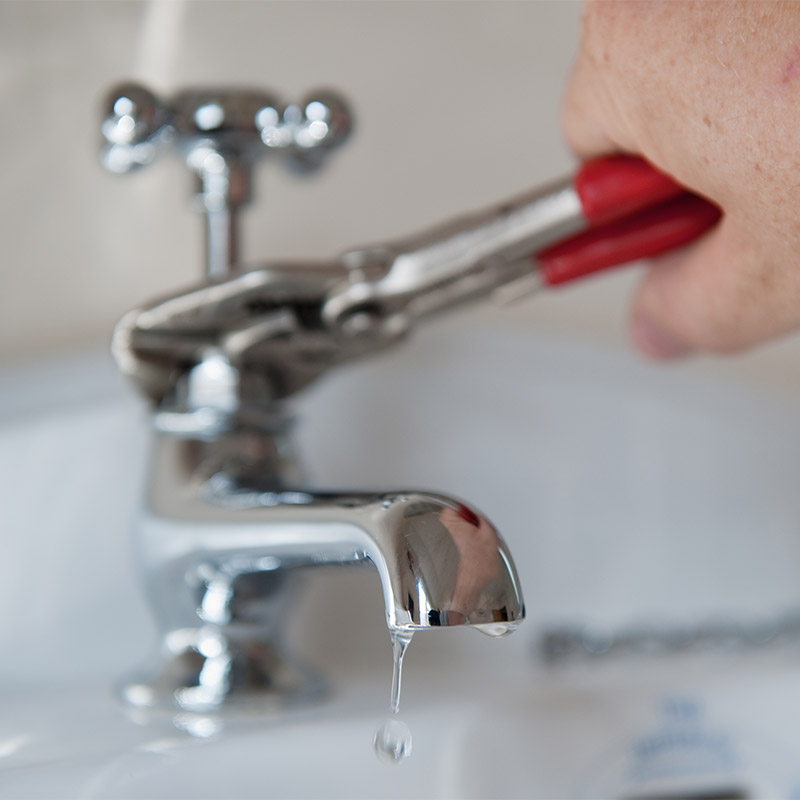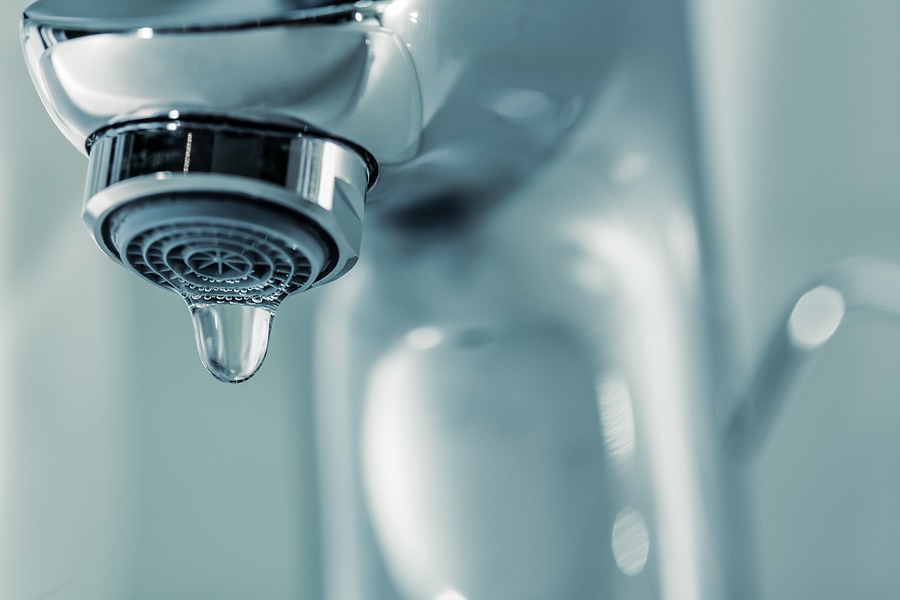When It's Essential to Repair a Malfunctioning Faucet
When It's Essential to Repair a Malfunctioning Faucet
Blog Article
Almost everyone has their personal thinking when it comes to Leaky Faucets: Why They Happen & What to Do About Them.

Trickling taps might seem like a small aggravation, but their impact goes beyond just the inconvenience of the sound. From drainage to sustaining unnecessary economic expenses and health and wellness risks, ignoring a trickling tap can lead to various consequences. In this write-up, we'll look into why it's important to address this common family concern without delay and efficiently.
Wastage of Water
Ecological Impact
Trickling taps contribute significantly to water wastefulness. According to the Environmental Protection Agency (EPA), a single tap leaking at one drip per second can lose greater than 3,000 gallons of water per year. This not just stress water sources however also affects communities and wild animals dependent on them.
Financial Costs
Increased Water Bills
Beyond the ecological impact, trickling taps can inflate water costs significantly. The collected waste over time equates into greater energy expenses, which could have been avoided with timely repairs.
Potential Home Damage
Furthermore, extended leaking can cause damage to components and surfaces surrounding the faucet. Water buildup can cause discoloration, rust, and also structural issues if left ignored, causing additional repair work costs.
Health and wellness Worries
Mold And Mildew and Mildew Development
The continuous visibility of wetness from a leaking tap produces an ideal atmosphere for mold and mildew development. These fungi not just compromise indoor air top quality however likewise present wellness dangers, especially for individuals with breathing problems or allergic reactions.
Waterborne Conditions
Stationary water in trickling taps can end up being a breeding place for germs and various other virus, enhancing the risk of waterborne illness. Contaminants such as Legionella microorganisms thrive in stagnant water, potentially leading to major illnesses when consumed or breathed in.
DIY vs. Specialist Repair work
Pros and Cons of Do It Yourself Repair
While some may try to repair a dripping tap themselves, DIY repair work include their own collection of challenges. Without proper expertise and devices, do it yourself efforts can exacerbate the issue or lead to insufficient fixings, prolonging the problem.
Advantages of Employing an Expert Plumber
Hiring a professional plumber makes certain that the underlying cause of the trickling tap is dealt with properly. Plumbing professionals possess the expertise and devices to identify and repair tap concerns effectively, conserving time and lessening the risk of more damage.
Step-by-Step Overview to Fixing a Dripping Tap
Devices Needed
Prior to trying to fix a trickling tap, gather the essential devices, including a flexible wrench, screwdrivers, substitute components (such as washers or cartridges), and plumber's tape.
Common Tap Issues and Their Solutions
Recognize the type of faucet and the particular issue triggering the drip. Common issues include damaged washing machines, corroded shutoff seats, or damaged O-rings. Refer to supplier directions or on the internet tutorials for step-by-step assistance on fixings.
Preventive Measures
Normal Maintenance Tips
To stop dripping faucets, do regular upkeep such as cleansing aerators, examining for leakages, and changing damaged parts without delay. In addition, consider setting up water-saving tools or updating to a lot more reliable fixtures.
Value of Prompt Fixes
Resolving trickling faucets as soon as they're seen prevents additional water wastefulness and potential damages, inevitably saving both water and cash over time.
Influence On Residential Or Commercial Property Worth
Understanding of Well-Maintained Building
Preserving a building in good condition, consisting of attending to upkeep issues like leaking faucets, boosts its viewed value and desirability among potential buyers or lessees.
Influence on Resale Worth
Properties with well-kept plumbing fixtures, consisting of faucets, command greater resale values in the real estate market. Dealing with leaking taps can contribute to a favorable impact throughout home assessments and arrangements.
Environmental Obligation
Specific Contribution to Conservation
Taking responsibility for dealing with dripping taps aligns with broader initiatives toward water preservation and ecological sustainability. Every individual's activities collectively make a substantial impact on protecting precious resources.
Sustainable Living Practices
By focusing on timely repairs and taking on water-saving practices, people contribute to sustainable living techniques that benefit both present and future generations.
Verdict
Dealing with a leaking tap exceeds simple comfort; it's an essential action toward conserving water, lowering monetary costs, and guarding wellness and residential or commercial property. Whether via DIY repairs or professional help, doing something about it to repair dripping faucets is a tiny yet impactful means to advertise responsible stewardship of sources and add to a much healthier, a lot more lasting future.
How to Fix a Leaky Faucet: Step-by-Step Repair Guide
A leaky faucet may seem like a simple annoyance, but if it's not fixed promptly, that leak could cost hundreds to potentially thousands. From water damage to mold, mildew, and high water bills, even a tiny leak can be catastrophic if left unattended. Damage like this can even affect the overall value of your home, so it's important to take the right approach for leaky faucet repair. You may need the help of a plumber in some cases, but we've got a few tips you can try on how to fix a leaky faucet before calling the pros.
Four Faucet Types
When you're learning how to fix a leaky faucet, the first step is knowing what kind of faucet you're working with! There are four common types.
Cartridge Faucets
Cartridge faucets come in one- or two-handled varieties. In one-handled cartridge faucets, hot and cold water combines in a single cartridge. In the two-handled versions, hot and cold water are controlled separately and mixed in the faucet.
Ball Faucets
Ball faucets have a single lever you push up and down to adjust the pressure and rotate to change the temperature. A slotted metal ball controls the amount of water allowed into the spout.
Compression Washer Faucets
They're the oldest type of faucet, but they're still used in many homes — especially older ones. Compression faucets have two separate handles that, when turned, raise or lower the washer that seals a water valve. This valve stops water from flowing through the faucet when it is turned off.
Disc Faucets
Disc faucets rarely need to be repaired due to their maintenance-free design. The water flow is controlled by two discs — the upper one raises and lowers against a fixed lower disc, creating a watertight seal. If your disc faucet starts leaking, you may need to replace the seals or clean residue buildup from the inlets.
Fixing a Leaky Faucet
Step 1: Turn Off the Water
Whether you're learning how to fix a leaky bathtub faucet or how to fix a leaky kitchen faucet, always turn off the water supply to your working area when you're fixing a leak. The last thing you want is a flood added to your list of things to fix.
Look for the shutoff valves below your sink or around the tub and turn them clockwise to stop the water flow. If your faucet doesn't have shutoff valves, you may need to turn off the water for the whole house. Check to make sure it's off by turning the faucet on. If nothing comes out, you're ready to start the repair.
Step 2: Take Apart the Faucet
How you disassemble your faucet depends on the type of fixture you have. You can use a flathead screwdriver to remove the caps on top of the handle or handles for cartridge and compression faucets. Inside, you should see handle screws. Unscrew these with a screwdriver to remove the handle.
Disc- and ball-style faucets will typically have an inlet screw near the handle, and removing that will reveal the interior of the faucet.
Detach the Valve Stem
For cartridge- and compression-style faucets, you'll see the inner valve stem or cartridge once you remove the faucet handles. If you have a compression faucet, unscrew the brass valve stem. If you have a cartridge faucet, pull out the cartridge. If your cartridge has been in place for a while, it may require some tools or extra force to remove it due to mineral deposits.
Examine and Replace Parts
Once you've removed the parts, check them out to confirm what needs to be replaced. You may see corroded rubber washers, O-rings, stems, or cartridges. On a ball-style faucet, check the seats and springs for damage.
If you need to repair a leaky disc faucet, check the inlet and seals on the lower disc.
Once you determine what parts must be replaced, visit your local hardware store. Bring the damaged parts with you to ensure you can purchase the correct components to replace them.
Clean Valves and Faucet Cavity
If you've removed a stem or cartridge, you may notice mineral buildup in the faucet's threads. Use white vinegar to clean the valve seat by soaking it for a few minutes, then scrub it away with a soft toothbrush and rinse with warm water. You can also clean the interior of the faucet in the same way.
Reassemble the Faucet
Once your faucet is cleaned and the required parts have been replaced, it's time to reassemble it. Put the pieces back together and slowly turn the water supply back on. Doing this slowly is crucial because too much initial water pressure can damage the new hardware you've just installed.
https://homewarranty.firstam.com/blog/how-to-fix-leaky-faucet

As a fervent person who reads on Water Dripping from Faucet: Why and How to Fix, I thought sharing that short article was sensible. Those who enjoyed our blog posting plz be sure to share it. Thanks a bunch for being here. Don't forget to come visit our website back soon.
Report this page